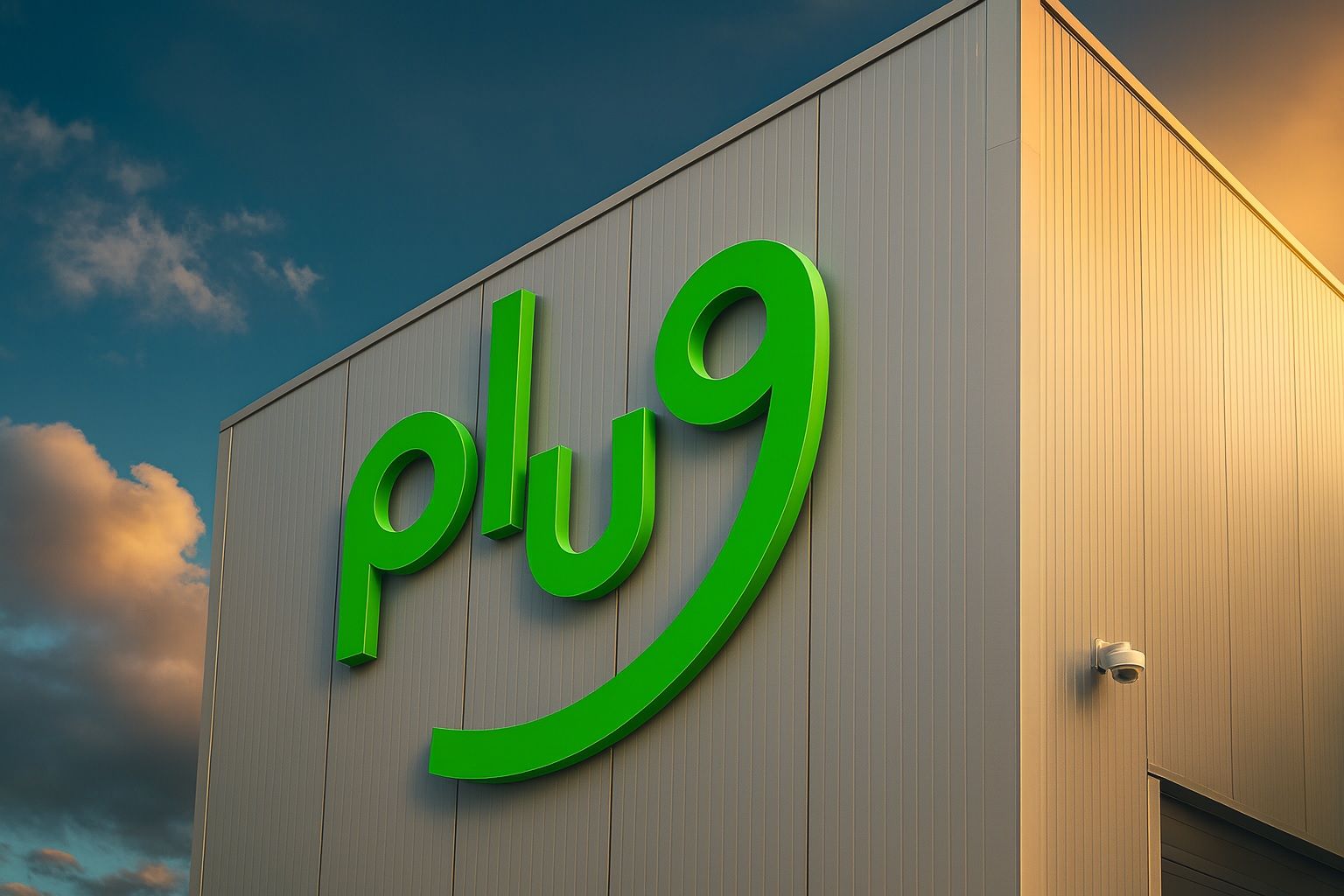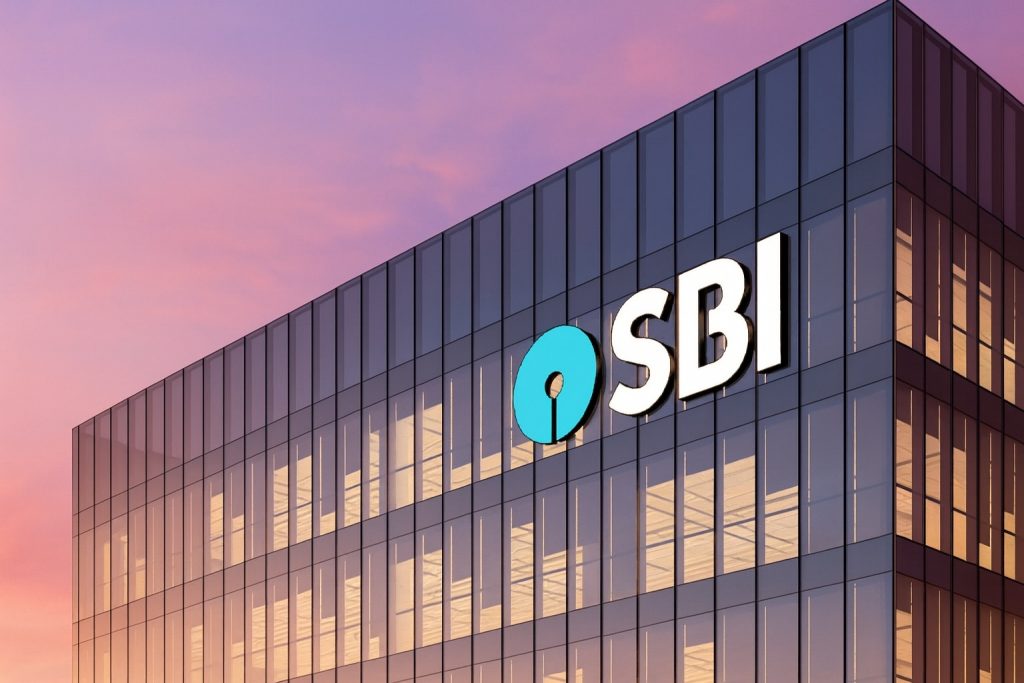- PLUG Stock Jumps: Plug Power (NASDAQ: PLUG) traded around $3.7 on Oct. 20, 2025 after surging roughly +7% in early Monday trading [1] [2]. Shares have nearly doubled since early September, up about 170% over the past three months amid frenzied volume and short-covering [3].
- Analysts Turn Bullish: A wave of analyst upgrades boosted sentiment. TD Cowen just hiked its price target from $3.00 to $4.50 (Buy rating) following meetings with Plug’s CFO, citing a clear profitability roadmap [4]. Earlier, H.C. Wainwright issued a Street-high $7.00 target – more than doubling its prior forecast – fueled by “significant” power cost increases and new policies making green hydrogen “more competitive” [5]. Regional firm Craig-Hallum also raised its target to $4 [6].
- Big Cash Infusion: Plug Power raised $370 million in fresh capital this month via a warrant exercise deal [7]. An investor exercised warrants at $2/share (185.4 million shares) for $370 M immediate proceeds, and received new warrants at $7.75 for potential future funding (~$1.4 B if fully exercised) [8]. This financing bolsters liquidity but brings dilution risk, as the share count could jump if all new warrants vest. Still, Susquehanna noted the cash eases near-term funding needs and nearly doubled its price target to $3.50 (Neutral stance) after the deal [9].
- Leadership & Partnerships: In a planned succession, Plug Power named Jose Luis Crespo (current Chief Revenue Officer) as incoming CEO, succeeding longtime chief Andy Marsh by March 2026 [10]. Crespo has helped build an $8 billion sales pipeline (with Amazon, Walmart, etc.) [11], and his elevation signals continuity as Plug scales up. On the operations front, Plug just delivered a 10 MW electrolyzer (a system that produces hydrogen from water using electricity) to Galp’s Sines refinery in Portugal, its largest single hydrogen project to date (part of a 100 MW green hydrogen deployment) [12]. Such milestone projects and strategic partnerships underscore Plug’s growing global reach in clean hydrogen.
- Hydrogen Tailwinds & Policy: The broader hydrogen sector is seeing major tailwinds. A new U.S. energy bill extended a 30% investment tax credit for fuel-cell projects (2026–2032) and a clean hydrogen production tax credit through 2028 [13], sharply improving the economics for Plug’s fuel-cell forklifts and electrolyzers. Globally, large-scale hydrogen initiatives are advancing – for example, companies like Woodside and KEPCO inked a deal to develop an Australia-to-Japan liquid hydrogen supply chain [14]. These developments bolster the long-term demand outlook for green hydrogen and fuel-cell technology.
October Rally Puts PLUG Near Highs
Plug Power’s stock has been on a tear in October, rebounding from penny-stock levels to approach its yearly highs. The shares leapt from under $1.50 in early September to over $4.00 by mid-October [15] [16]. In the first week of October alone, PLUG spiked +35% in one day (Oct. 3) after a bold analyst upgrade, then kept climbing to an intraday peak of ~$4.58 (a new 52-week high) on Oct. 6 [17] [18].
This frenetic rally was amplified by a classic short squeeze. Approximately 32–40% of Plug’s publicly traded float had been sold short (investors betting on a price drop) [19] [20]. As positive news hit, many short sellers rushed to cover their positions by buying shares, which turbocharged the upward momentum. Trading volumes exploded (often 2–3× the typical levels [21]), indicating intense interest from both bullish traders and squeezed shorts. The result: PLUG stock is now up over +64% year-on-year and vastly above its summer lows, far outpacing the broader market in recent weeks.
On Oct. 20, Plug Power stock added to those gains, jumping about 6–7% after an upbeat analyst call to start the week [22] [23]. By midday Monday, PLUG hovered around the mid-$3s per share – a dramatic turnaround considering it traded near $0.70 at its 52-week low [24]. Despite some pullbacks late last week, the stock remains ~$3.7 as of Oct. 20, not far from its one-year high. Investors are now asking: how sustainable is this run, and what’s driving the optimism around Plug Power?
Analyst Upgrades Fuel Optimism
Wall Street analysts have played a big role in Plug’s resurgence, issuing a flurry of higher price targets and positive outlooks on the company’s prospects. The latest boost came from TD Cowen, whose analyst Jeffrey Osborneraised his PLUG target to $4.50 (from $3.00) while affirming a Buy rating [25]. Cowen’s bullish revision followed management meetings in which Plug’s CFO Paul Middleton and IR head Roberto Friedlander outlined a “roadmap to profitability” focusing on cost cuts, scaling up revenue, and smarter pricing strategies [26]. Cowen highlighted two core growth engines – electrolyzers (for on-site hydrogen production) and material handling fuel cells (e.g. forklift power units used by Amazon, Walmart, etc.) – as the clearest near-term opportunities [27]. In fact, Osborne noted that Plug’s sales pipeline for electrolyzer projects is robust and could drive significant revenue in the next few years [28]. His $4.50 target is based on a 5× EV/sales multiple on 2027 forecasts, reflecting confidence in Plug’s future growth trajectory [29].
TD Cowen’s call adds to a series of high-profile upgrades that ignited investor enthusiasm. On Oct. 3, H.C. Wainwright analyst Amit Dayal sent PLUG soaring by boosting his 12-month price target from $3 to $7 – the most bullish call on the Street [30]. Dayal reiterated a Buy and argued that surging electricity costs (partly from booming data center demand) plus new government support (including pro-nuclear policies) make green hydrogen “more competitive” and economically attractive [31]. This eye-popping $7 target (well above the stock’s price at the time) helped spark a “feeding frenzy” among traders [32]. Just days prior, on Sept. 26, Craig-Hallum (a research firm) had set a then-“Street high” $4.00 target [33], marking a sharp sentiment shift for a stock that was barely $2.30 at the end of September [34].
Even more conservative analysts have revised their views upward. Susquehanna’s Biju Perincheril, for instance, maintained a Neutral rating but nearly doubled his target to $3.50 (from $1.80) after Plug’s recent financing move [35]. This reflects a recognition that the company’s liquidity has improved (reducing worst-case downside), even if profitability is not yet achieved. Oppenheimer didn’t issue a formal target (it rates Plug “Perform”/hold), but after touring Plug’s facilities in late September, its analyst struck a constructive tone — predicting the upcoming quarter could be “the first meaningful step in the platform’s recovery.” [36] Improved margins and revenue growth, Oppenheimer noted, might finally signal that Plug’s heavy investments are beginning to pay off.
To illustrate the range of views, here’s a snapshot of recent analyst targets for Plug Power stock:
| Firm (Analyst) | Rating | New Target | Key Rationale / Comment |
|---|---|---|---|
| TD Cowen (Osborne) | Buy | $4.50 | Profitability focus via cost cuts & scale [37]. |
| H.C. Wainwright (Dayal) | Buy | $7.00 | Green H₂ “more competitive” with policy support [38]. |
| Susquehanna (Perincheril) | Neutral | $3.50 | Liquidity boost from $370 M cash; still cautious [39]. |
| Clear Street | Hold (downgrade) | $3.50 | Valuation concern – ~$4 seen as overvalued [40]. |
| Wall St. Consensus | – | ~$2.20 | Average 12-mo estimate implies pullback [41]. |
Notably, opinion remains divided. While bulls are piling in with aggressive targets, the average analyst 1-year target is only ~$2.20 [42] – well below the current price. In fact, some firms are urging caution: for example, Clear Street Capital just downgraded Plug to Hold, arguing the stock had run “too far, too fast” and setting a modest $3.50 fair value [43]. And after a massive multi-week rally, Jefferies analysts covering a peer stock warned of “early signs of over-exuberance” in the hydrogen space [44]. The mixed analyst views underscore that Plug Power’s valuation is a hot debate – optimism over growth is colliding with skepticism over ongoing losses.
Cash Raise Tackles Funding Needs (But Dilution Looms)
Plug Power’s sprint higher has been underpinned by moves to strengthen its balance sheet and fund its ambitious growth plans. On Oct. 8, the company announced a complex warrant inducement transaction that immediately brought in $370 million in gross cash proceeds [45]. In this deal, a large institutional investor agreed to exercise 185.4 million existing warrants early at $2.00 per share, injecting the $370 M capital into Plug’s coffers [46]. In exchange, Plug issued that investor new warrants for an equal number of shares (185.4 M) with a much higher $7.75 strike price, exercisable later (by March 2028) pending shareholder approval to authorize more shares [47]. If those new warrants are fully exercised down the road, Plug could receive an additional $1.4 billion – a huge potential war chest for future projects [48].
Why raise cash this way? Plug Power is still operating at a loss, so bolstering its cash position is critical to fund expansion (factories, product development, project deployments) while it works toward breakeven. The company ended Q2 2025 with just about $140 M in available cash on hand [49], which might only cover a couple months of its cash burn. The $370 M infusion meaningfully extends Plug’s “runway” into 2024, reducing the risk of a liquidity crunch. Management has stated it aims to reach gross margin breakeven by Q4 2025 [50] and improve cash flow through scaling up revenues and cutting costs. The new capital gives it breathing room to execute on those goals.
However, this financing strategy comes at a cost to shareholders. The immediate warrant exercise alone adds ~185 million new shares to Plug’s share count (an increase of ~19% quarter-over-quarter) [51]. And if the additional $7.75 warrants are later exercised, the share count could double from current levels – a significant potential dilution of existing equity. This “overhang” was partly why Plug’s stock dipped ~10% right after the deal was unveiled (as some investors reacted to the prospect of future supply of shares) [52] [53]. As one analysis noted, the warrant deal’s math “registers 185M shares at $2… helpful for liquidity, but resale could add supply to the market,” which weighed on sentiment initially [54] [55].
Encouragingly, Plug’s management and board appear mindful of these concerns. They structured the $7.75 follow-on warrants with a high premium (~100% above the pre-deal stock price) to signal their confidence in the company’s future value [56]. And the second tranche is contingent on shareholder approval – essentially giving existing investors a say in authorizing the potential dilution. In the meantime, Plug also secured a new $525 M debt facility earlier this year [57] to refinance nearer-term debt, indicating a multi-pronged approach to shoring up finances.
Leadership changes are also underway to steer Plug Power through this next phase. On Oct. 7, Plug announced that CEO Andy Marsh – who has led the company for nearly 20 years – will step down in 2026, with Jose Luis Crespo appointed as President (effective Oct. 10) and heir-apparent CEO after the next annual report [58] [59]. Crespo is a company veteran (joined 2014) credited with expanding Plug’s sales to major customers like Amazon, Walmart, and Home Depot [60]. He will work alongside Marsh through the transition, after which Marsh will become Executive Chairman [61]. The market’s initial reaction to the succession news was mixed – shares dipped ~3% on the announcement [62] – but many see Crespo as a logical choice to continue Plug’s growth strategy with fresh energy. The leadership handoff is set against the backdrop of Plug’s rapid scaling and the push for profitability; as one industry watcher put it, executing smoothly at larger scale will be key for the incoming CEO to win investor confidence.
Hydrogen Sector Trends: Hype or Lasting Boom?
Plug Power’s story is intertwined with the fate of the hydrogen and fuel cell industry at large. The recent spike in Plug’s stock has come amid a broader uptick in hydrogen-related equities, policy support, and project activity – but also warnings not to get carried away.
On the positive side, government policies around the world are increasingly favorable for green hydrogen. In the United States, the marquee climate legislation last year and subsequent energy bills have created generous incentives: a Production Tax Credit (PTC) of up to $3 per kilogram for clean hydrogen was enacted, and just this quarter lawmakers extended a 30% Investment Tax Credit (ITC) for fuel-cell equipment through 2032 [63]. These incentives substantially improve the return on investment for hydrogen projects. For example, companies installing Plug’s hydrogen fuel-cell forklifts or electrolyzer systems can now reclaim a third of the cost as a tax credit, while producers of green hydrogen fuel can earn tax credits that make their product more cost-competitive with diesel or natural gas [64]. This policy boost is a key tailwind underpinning long-term demand for Plug’s solutions (as cheaper hydrogen and equipment spur more adoption).
Internationally, large-scale hydrogen projects keep advancing, signaling that the “hydrogen economy” is not just hype but moving toward reality. In Asia-Pacific, a notable recent deal saw Australia’s Woodside Energy, Japan Suiso Energy, and KEPCO (a major Korean utility) sign an MoU to develop an Australia–Japan liquid hydrogen supply chain [65]. Europe is also investing heavily in electrolyzers and hydrogen storage as part of its clean energy goals. Plug Power itself has a footprint in Europe – beyond the Galp Portugal project, it has partnerships in France, Germany, and a gigafactory in Rochester, NY to produce electrolyzer stacks for global use. The momentum of big projects and partnerships suggests that demand for the kind of products Plug offers (fuel cells, hydrogen production equipment, services) could expand dramatically over the next decade if hydrogen tech scales up as planned.
That said, there are also notes of caution from experts about the recent exuberance. Some of Plug’s peers have not enjoyed the same stock euphoria – for instance, Bloom Energy (BE) shares actually fell in late September after a Jefferies analyst downgraded it, warning of “euphoria over fundamentals” in clean energy stocks and questioning whether hype (like AI data center power needs) really translates into near-term fuel cell sales [66] [67]. FuelCell Energy (FCEL) likewise stumbled ~9% in late September trading [68]. These moves highlight that investors are being selective, rewarding companies like Plug that show tangible progress, but punishing others if growth outlooks appear stretched or if financing looks risky.
Even for Plug Power, skeptics point out that the company is still deeply unprofitable today – over the last 12 months it lost nearly $2 billion net [69] – and it continues to burn cash on its path to scale. Total shares outstanding have ballooned to 1.18 billion (up +49% year-on-year) as the company issues equity and warrants to raise funds [70]. This dilution means any future profits will be spread across a much larger shareholder base. Moreover, high interest rates and economic uncertainties could make investors less tolerant of money-losing “future growth” companies, hydrogen included, if results disappoint. As Barron’s noted, Plug’s 30+% short interest shows that plenty of traders are betting against the stock – believing it may be overvalued relative to current earnings [71] [72].
Outlook: Can Plug Power Deliver on the Hype?
Going forward, Plug Power faces a pivotal test: turning all this excitement into concrete financial performance. The next big catalyst will be Q3 2025 earnings, expected around November 11, 2025 [73] [74]. Investors will scrutinize whether Plug’s revenue growth is accelerating and if gross margins are improving toward management’s targets. Analysts are forecasting roughly +13% revenue growth in 2025 and +24% in 2026 for Plug [75] – solid double-digit gains as the hydrogen market expands, but modest compared to the company’s long-term ambitions. Plug’s leadership has repeatedly emphasized that scaling up production (to fulfill a backlog of orders for electrolyzers and fuel-cell systems) will gradually lower unit costs, helping margins. Indeed, recent quarterly results showed some progress: Q2 2025 revenue of $174 M was up +21% year-on-year, and gross margin improved from -92% a year ago to -31% (still a loss, but a big step in the right direction) [76]. If the upcoming Q3 report shows continued margin gains and revenue above expectations, it would reinforce the bullish narrative that Plug is on the cusp of a turnaround.
Expert opinions remain split on how much upside is left. Bulls argue that Plug Power is at an inflection point: Colin Rusch of Oppenheimer noted that the company is “executing well on critical initiatives” like cost reduction and could finally demonstrate a viable platform this quarter [77]. He and others see 2025–2026 as breakthrough years where Plug’s past investments (in hydrogen plants, factories, partnerships) start yielding more sales and narrowing losses – potentially setting the stage for profitability by 2027 if all goes well [78] [79]. They also point to qualitative wins: for example, Plug’s GenDrive fuel cells are powering thousands of forklifts at logistics centers, and its high-profile customers (Amazon, Walmart, FedEx) validate the product-market fit in material handling. As green hydrogen supply increases (from projects like the Galp electrolyzer and others in the pipeline), Plug can also fuel growth in stationary power and heavy transport markets.
Bears and skeptics, however, urge investors to keep their feet on the ground. They highlight that even at ~$3.70 per share, Plug Power’s market cap is over $4 billion [80] – a rich valuation for a company with ~$0.67 billion in trailing 12-month revenue and large losses [81]. The average analyst price target (~$2.20) implies ~40% downside [82], reflecting lingering concerns about dilution and execution risks. If hydrogen adoption or project timelines slip, Plug’s growth could disappoint. Moreover, any stumble – an earnings miss, delays in hitting cost goals, or broader market turbulence – could trigger a sharp pullback given how much speculative enthusiasm is baked into the stock after the 170% run-up.
For now, Plug Power has regained the market’s attention with its high-voltage rally and the vision of a hydrogen-fueled future. The company is benefiting from strong industry momentum (government incentives and global clean energy investment) and has shored up its finances to press its advantage. Key voices on Wall Street are cautiously optimistic: as one analyst put it, Plug’s next results might be “the first meaningful step in the platform’s recovery” [83]. If the company can clear that bar – showing tangible progress toward its profitability and growth milestones – it could justify the recent hype and possibly keep the stock buoyant. But if results underwhelm or market sentiment shifts, investors may rediscover gravity in this high-flying hydrogen stock.
Either way, Plug Power’s journey in the coming months will be a closely watched bellwether for the hydrogen industry – testing whether the recent hype can evolve into lasting shareholder value, or if this dramatic surge will serve as a reality check for the clean energy boom.
Sources: Recent analyst reports and stock data from TechStock² [84] [85], Reuters [86], Investing.com [87] [88], company press releases, and other financial news outlets. All information is current as of October 20, 2025.
References
1. www.gurufocus.com, 2. stockanalysis.com, 3. ts2.tech, 4. www.investing.com, 5. ts2.tech, 6. ts2.tech, 7. www.investing.com, 8. www.stocktitan.net, 9. www.sahmcapital.com, 10. www.reuters.com, 11. www.reuters.com, 12. ts2.tech, 13. ts2.tech, 14. ts2.tech, 15. stockanalysis.com, 16. stockanalysis.com, 17. ts2.tech, 18. www.sahmcapital.com, 19. ts2.tech, 20. stockanalysis.com, 21. ts2.tech, 22. www.gurufocus.com, 23. stockanalysis.com, 24. www.sahmcapital.com, 25. www.investing.com, 26. www.investing.com, 27. www.investing.com, 28. www.investing.com, 29. www.investing.com, 30. ts2.tech, 31. ts2.tech, 32. ts2.tech, 33. ts2.tech, 34. ts2.tech, 35. www.sahmcapital.com, 36. ts2.tech, 37. www.investing.com, 38. ts2.tech, 39. ts2.tech, 40. www.investing.com, 41. ts2.tech, 42. ts2.tech, 43. www.investing.com, 44. ts2.tech, 45. www.stocktitan.net, 46. www.stocktitan.net, 47. www.stocktitan.net, 48. www.stocktitan.net, 49. ts2.tech, 50. ts2.tech, 51. stockanalysis.com, 52. www.sahmcapital.com, 53. stockanalysis.com, 54. ts2.tech, 55. ts2.tech, 56. www.stocktitan.net, 57. ts2.tech, 58. www.reuters.com, 59. www.reuters.com, 60. www.reuters.com, 61. www.reuters.com, 62. www.reuters.com, 63. ts2.tech, 64. ts2.tech, 65. ts2.tech, 66. ts2.tech, 67. ts2.tech, 68. ts2.tech, 69. stockanalysis.com, 70. stockanalysis.com, 71. ts2.tech, 72. ts2.tech, 73. ts2.tech, 74. ts2.tech, 75. ts2.tech, 76. ts2.tech, 77. ts2.tech, 78. www.investing.com, 79. www.investing.com, 80. www.investing.com, 81. stockanalysis.com, 82. ts2.tech, 83. ts2.tech, 84. ts2.tech, 85. ts2.tech, 86. www.reuters.com, 87. www.investing.com, 88. www.investing.com







